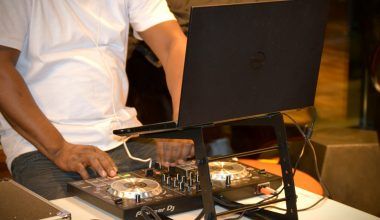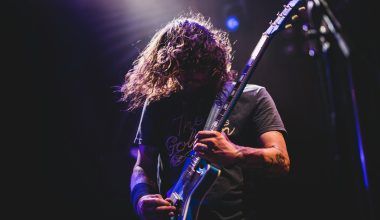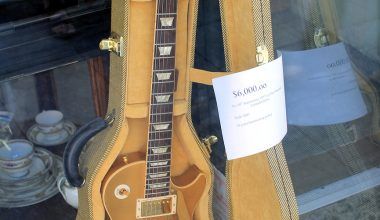Electronic Dance Music, commonly known as EDM, has become a global phenomenon. Its pulsating beats, euphoric melodies, and boundless energy have redefined the music industry. From underground clubs to massive music festivals, EDM music has found its way into the hearts of millions.
EDM is not just a genre—it’s an experience. It brings people together, inspires movement, and evokes emotions through sound. With its roots in the early electronic music of the 1970s and 80s, EDM has evolved into a multi-faceted genre with diverse styles and subgenres.
Let’s dive into the history, evolution, and cultural significance of EDM music, along with the artists and tracks that have shaped its journey.
The Origins of EDM Music
Early Beginnings
The history of EDM music traces back to the experimental electronic sounds of the 1970s. Pioneers like Kraftwerk and Giorgio Moroder laid the foundation for the genre by incorporating synthesizers, drum machines, and electronic effects into their music. Tracks like “Autobahn” by Kraftwerk and “I Feel Love” by Donna Summer showcased the potential of electronic soundscapes.
The Birth of Dance Music
The 1980s saw the rise of house and techno music in Chicago and Detroit, respectively. These styles emphasized repetitive beats and grooves, becoming staples in nightclubs. Tracks like “Your Love” by Frankie Knuckles and “Strings of Life” by Derrick May became early anthems of electronic dance culture.
The Rise of EDM Music
1990s: Rave Culture and Mainstream Appeal
The 1990s marked the explosion of rave culture, with EDM music gaining momentum in Europe and North America. Subgenres like trance, drum and bass, and jungle emerged during this era. Iconic tracks like “Sandstorm” by Darude and “Children” by Robert Miles became synonymous with the rave scene.
2000s: Global Dominance
The 2000s witnessed EDM music entering mainstream charts. Artists like Daft Punk, Tiësto, and Deadmau5 brought electronic music to larger audiences. Festivals like Tomorrowland and Ultra Music Festival became global events, attracting fans from all over the world.
Subgenres of EDM Music
EDM music is incredibly diverse, encompassing a wide range of styles and sounds. Here are some of the most popular subgenres:
1. House Music
House music is characterized by its steady 4/4 beat and soulful melodies. Popular tracks include:
- “One More Time” by Daft Punk
- “Jack Your Body” by Steve “Silk” Hurley
2. Techno
Techno emphasizes futuristic sounds and repetitive rhythms. Iconic tracks include:
- “Blue Monday” by New Order
- “Energy Flash” by Joey Beltram
3. Trance
Trance is known for its uplifting melodies and emotional intensity. Key tracks include:
- “Adagio for Strings” by Tiësto
- “Silence” by Delerium ft. Sarah McLachlan
4. Dubstep
Dubstep is characterized by heavy bass drops and intricate rhythms. Notable tracks include:
- “Scary Monsters and Nice Sprites” by Skrillex
- “Bangarang” by Skrillex
5. Drum and Bass
Drum and bass features fast-paced beats and intricate drum patterns. Popular tracks include:
- “Brown Paper Bag” by Roni Size
- “Tarantula” by Pendulum
The Evolution of EDM Music
From Clubs to Arenas
EDM music began in underground clubs but quickly transitioned to larger venues. The growth of music festivals and live performances has played a significant role in its popularity.
Influence of Technology
Advancements in technology have revolutionized EDM music. Digital audio workstations (DAWs) like Ableton Live and FL Studio have made music production accessible to aspiring artists. This democratization has led to an explosion of creativity in the genre.
Iconic EDM Artists
Daft Punk
The French duo revolutionized EDM music with their robotic personas and groundbreaking tracks like “Get Lucky” and “Harder, Better, Faster, Stronger.”
Calvin Harris
Known for his chart-topping hits, Calvin Harris has become one of the highest-paid DJs in the world. Tracks like “Summer” and “Feel So Close” are global anthems.
Avicii
Avicii’s tracks like “Wake Me Up” and “Levels” have left an indelible mark on EDM music, inspiring millions worldwide.
EDM Festivals: A Celebration of Music and Community
Festivals like Tomorrowland, Electric Daisy Carnival (EDC), and Coachella are at the heart of EDM culture. These events bring together fans, artists, and immersive experiences.
Tomorrowland
Held in Belgium, Tomorrowland is one of the largest EDM festivals in the world. Its stunning stage designs and lineup of top DJs make it a must-visit for fans.
Electric Daisy Carnival (EDC)
EDC, held in Las Vegas, is known for its vibrant lights and high-energy performances. It celebrates the unity and creativity of EDM music.
The Future of EDM Music
Emerging Artists
New artists continue to push the boundaries of EDM music, exploring unique sounds and blending genres. Names like Martin Garrix, Zedd, and Marshmello are shaping the future of electronic music.
Technological Innovations
Virtual reality and AI are set to transform EDM performances, creating even more immersive experiences for fans.
Conclusion: Why EDM Music Matters
EDM music is more than just a genre—it’s a global movement. Its ability to bring people together, inspire creativity, and push the boundaries of sound makes it a vital part of modern music culture.
Whether you’re a long-time fan or new to the scene, the world of EDM music offers endless possibilities to explore. So, turn up the volume and let the beats take you on a journey.
Related Articles:
For further reading, explore these related articles:
For additional resources on music marketing and distribution, visit Deliver My Tune.






